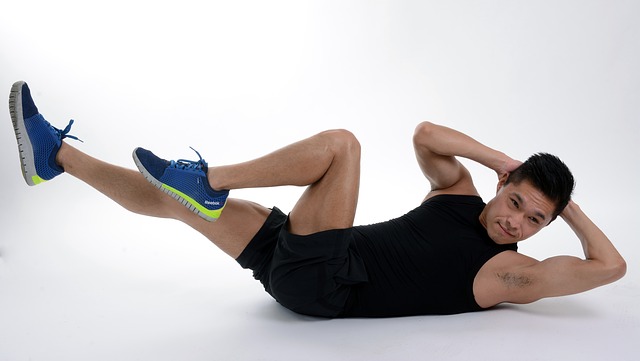blog
Sitting Posture
Sitting on your backside all day in various forms of repose and poor posture can wreak havoc with weak backs. In lieu of the last blog, it is probably worth reminding people about good posture and a few simple ways to keep yourself accountable. Try to remind yourself that every time you catch yourself slumping or slouching and correct, you are making an investment in your overall well-being.
- Feet flat on the ground. This is a test: how long can you last before you cross your legs or adjust “comfortably,” yet crookedly in a chair. One thing that will help you stay grounded is keeping both feet flat on the floor.
- Shoulders back. Draw back your shoulder blades and take a deep breath. You have relieved the pressure of slumping from the diaphragm and relieved shoulder tension at the same time.
- Ears over shoulders: this maxim helps you remember not to lean toward the screen, as is the natural human impulse as the hours drag on. Whenever you can remember, hit the reset button so that you don’t strain the muscles in the neck and upper back.
- Simply keep your butt back in the chair. This encourages you to also keep your back straight, using the chair as a rest. If you really want to up the ante, stick a rolled up sweater or small pillow in the low back to support the natural curvature of the spine.
Stop leaving work reeling from the effects of 8 hours on a chair in front of a screen. Call our office to enact a proactive plan that will help keep you invested in your health and productivity by keeping the pain at bay. If your muscles are sore and stiff, we provide the hands-on therapy which will relieve tension and open them up to an influx of nutrients through enhanced blood flow. Chiropractic is essential for maintaining spinal balance and thereby regulating the function of the nervous system. Call our office and find out how we can help you today!
Dr. Jeff Haynes, D.C.
Sitting Posture and Headaches
It is not easy to pinpoint the source of a headache: while certain headaches certainly correspond to specific triggers, the majority of headaches are cumulative and specific to the individual: your headache is a manifestation of synergism between genetics, physical and mental health, environmental and other factors. While these are broad categories, the point is that there are innumerable factors pertaining to your headache. Managing the symptom by masking the pain is ineffectual; like procrastinating with any problem large or small, it is unsustainable. A factor that you may not immediately consider is posture, and it serves as a great case in point.
For those deskbound workers, the office can be a barbaric place for the back. Without a proactive plan in place for stopping it, physical and mental stress is likely to accumulate and whether it be over a matter of days, weeks or months, the body is going to reach a breaking point. Persistently poor posture in the workplace contributes directly to headaches because it puts the spine out of balance. When we slouch down, or slump forward, we are putting a disproportionate amount of weight burden on the spine. The muscles, usually already in a state of weakness, are called on to compensate which often results in painful muscle spasms. Often times, this pain is referred from nerves in the neck to the head, manifesting as a headache.
Treatment for chronic headaching must therefore be as cerebral in order to combat the wide range of irritants. Keeping muscles strong and the body limber is critical, because if you are going to put it through 8 hours of (mostly)sitting, it needs regular conditioning to combat the weakening that is happening. Learning to love posture is the next great step, because you spend most of the time sitting. And finally, learning to break the cycles of accumulating tension by stretching regularly on the job is a great way to stay headache-free.
Before all this, we need to get you pain free. No health plan can be successfully implemented if your body is holding you back; we lend you a helping hand to get back to a pain threshold that is manageable so you can focus on living life to the fullest, both within the workplace and without.
Dr. Jeff Haynes, D.C.
Regular Visits
The Haynes Chiropractic Treatment
As we say,” there is good treatment, better treatment, and there’s Haynes Chiropractic Treatment. Each visit at our office is usually pre-scheduled around your busy schedule. Our office hours are convenient for the busy Bakersfield hustle. Each visit will last between 20 to 40 minutes according to each specific condition.
We have two treatment rules we adhere to:
1. NO Pain Policy
Each treatment is designed to attain your goals without Pain. We have mastered various techniques throughout the years which provide the most effective treatment without hurting a patient.
2. NO Wait Policy
Knowing the busy schedules of today, our office system is designed to be convenient for your schedule. Our office is open at 9:00am three days per week and closes at 6:00pm monday through friday.
Most patients will arrive at the office proceed in to see the doctor immediately. After the Doctor Treatment is complete, some will be recommended physical therapy (if needed). Other patients will get a therapeutic massage before or after seeing the doctor. The treatment of Dr. Haynes is very unique. It is blend of straight and diversified methods of chiropractic, various muscle functional protocols, and home exercise, nutritional, ergonomic instructions.
Second Visit
Your Second Visit – Report of Findings
On your report visit we explain what we found and how we may be able to help you.On your report visit we explain what we found and how we may be able to help you.
On the second visit, which is usually the day following your first visit, you will receive a report of findings from your examination. For acute cases this can be done on the same day.
If x-rays were taken, we will review your x-rays and explain the findings to you. In most cases an anatomical models of the will be used to ensure your comprehension of the findings.
Each patient will have choices regarding treatment. Usually there are many ways to treat various conditions. We will then tell you the amount of improvement you can expect in your condition, as well as how long it will likely take to achieve meaningful results. You will be given an individualized treatment schedule and a re-exam date where we can determine your progress. The treatment will start immediately according to your treatment plan and goals established. Each part of your treatment will be thoroughly explained BEFORE performed.
First Visit
Your First Visit to Haynes Chiropractic
The Consultation
Patients typically visit a chiropractor for the first time through a personal reference or a referral of another health care specialist. The main goal of the first visit is to verify we can help you relieve and or correct the condition you present. Once we know you are a patient that can “get better” we’ll proceed with the following:
Patient History
In preparation for your consultation with the chiropractor, you will be asked to provide background information about your symptoms and condition. Types of questions the chiropractor might ask include:
- When and how did the pain start?
- Where is it located?
- Is it a result of an injury?
- What makes it better?
- What makes it worse?
- Your family Doctors and past procedures?
You will also usually be asked to provide the chiropractor with information on family medical history, any pre-existing medical conditions or prior injuries, and previous and current health providers and treatments.
Examination
Once the history has been completed, your Doctor will perform a thorough chiropractic examination. In addition to general tests such as blood pressure, pulse, respiration, and reflexes, the chiropractic examination will include specific orthopedic and neurological tests to assess:
- Range of motion of the affected part
- Muscle tone
- Muscle strength
- Neurological integrity
- X-rays ( if needed)
Based on the above examination procedures, further tests may be necessary to arrive at the assessment or diagnosis of the affected area (such as moving your leg in a specified manner, posture analysis, MRI, Nerve Conduction Testing ).
Treatment
It’s important to treat a patient when we know what is causing your condition. However, we offer emergency relief to easy immediate symptoms on the first visit if required.
Office Tour
Online Forms
Haynes Chiropractic offers our patient form(s) online so they can be completed it in the convenience of your own home or office.
- If you do not already have AdobeReader® installed on your computer, Click Here to download.
- Download the necessary form(s), print it out and fill in the required information.
- Fax us your printed and completed form(s) or bring it with you to your appointment.
New Patient Health History Form – Required
This lets us know the history and current state of your health. What questions, concerns, goals, regarding wellness can we help you with? Let us know!
Auto Accident Injury Form
If you do not already have AdobeReader® installed on your computer, Click Here to download.
The Wonder of Walking
It has been said that sitting is the new smoking and to a certain degree it’s true: as a whole, we are sitting more than ever, with poor posture and the added strain of cell phones and computer screens causing us to crane our neck in all sorts of awkward positions. Creating and sustaining a “healthy level of activity,” means preserving the health of your body into old age and in this scenario, every movement is precious. At Haynes Chiropractic, we like to think that big changes start with the smallest of building blocks. If you are deskbound 9-5 and find yourself sitting in the evening to relax, we would like to motivate you to move, even for half an hour a day, to the benefit of your spine.
When it comes to getting moving, why not start with walking? Walking encourages and provides your body with:
- Spinal balance, which also happens to be important in chiropractic philosophy.
- Improved circulation, getting your blood moving and moving oxygen and nutrients to parts of your body that are in need.
- Better range of motion, a result of more flexibility, which helps you stay strong against injury.
- Reduced pain, through endorphin release. Simply put, walking makes you happy and the body responds by producing more of the chemicals which make us feel that way.
- Fights stiffness, by freeing up the pressure and strain that accumulates from long days spent stagnant.
If we can just sneak 30 minutes of walking into your daily routine, whether it be a pre-breakfast stroll or a post-dinner digestive walk, we believe you will naturally acquire a thirst for the healing properties you experience. From there, who knows what kind of success you can achieve down the line. If pain is holding you back from walking, give our office in Bakersfield a call. We provide you with chiropractic adjustment, therapeutic massage, spinal decompression and traction modalities that can help you shed the pain and get on your feet again.
Dr. Jeff Haynes, D.C.
Ode to the Core Muscles
Consider your core: is it an ambiguous muscle group in the middle of your body, or is it a dynamic group of muscles that synergize to influence just about every movement (sans limbs) your body makes. So many people hear “core,” and think, “crunches/situps.” While this is good for establishing the center of your body as a force producer, people with back pain may want to consider conditioning the core as a stabilizer to lend support to beleaguered structures in the lower back.
Core strengthening is a key tool in any health plan attempting to rehabilitate an injury that is causing back pain and stiffness. Exercising these muscles regularly prevents them from weakening and keeps them strong enough to bear some of the burden of the upper body. Exercises that treat the core as a stabilizer include:
- Planks and side-planks
- Bridges
- Deadlifts
- Twisting crunches>regular crunches
These exercises help create a powerful center of the body to help prevent rehabilitate injuries and prevent their recurrence. Any plan that is made in light of injury should be discussed seriously with a medical professional. At Haynes Chiropractic, we can help you address pain and stiffness with the following modalities: chiropractic adjustment, therapeutic massage, spinal decompression and spinal traction. From there, we can discuss what level of activity you could possibly maintain in support of your health plan and help you make subtle lifestyle adjustments to support the health of your back.
Dr. Jeff Haynes, D.C.
Chiropractic and Athletic Performance
How do you define success in sport? Regardless of whether you are setting out to win a competition, achieving a new personal best or putting up a higher weight on the bench, staying healthy should always be a primary objective. At Haynes Chiropractic, we offer athletes of all levels and abilities the expertise and treatment that helps them prevent and recover from the wear and tear of athletic endeavor. High and low-impact sports each come with their own set of risks and rewards: for example, football is a sport that involves a lot of direct trauma to the spine while tennis injuries often result more from the torsion that you put your body through during the swing. No matter your sport, here are some benefits to be derived from adding chiropractic as an adjunct to your fitness plan.
- Increased blood flow
- Improved range of motion
- Better flexibility
- Better respiratory function
- Lowered risk for injury
- Promotes proper biomechanics
Routine spinal adjustments help reduce the irritation of nerves in the back, shortening the recovery time between training. We utilize other modalities including massage and trigger point therapy to deliver oxygen and nutrients to injured muscles, helping them heal faster. For Olympic athletes, casual runners and everyone in between, chiropractic is a good way to optimize your training.
Dr. Jeffrey Haynes, D.C.










